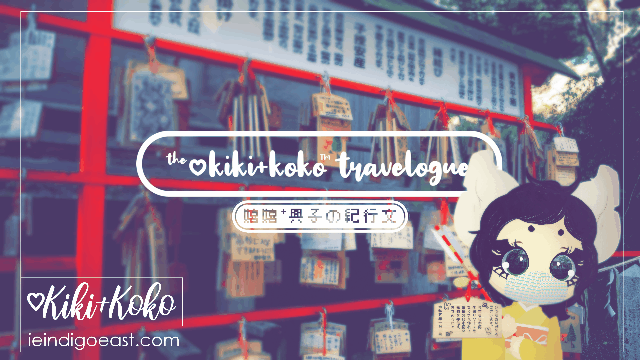
HELLO! I AM QUIZBO™!Welcome to the eighth instalment of the special corner: Kiki+Koko: Let’s NihonGO!! Online’s Japanese Word of the Weekday! Through the month of January, we have been creating new learning opportunities every weekday just for you! (Yes, you!) It does not have to be January to begin or continue your Japanese language learning journey. The time to work towards your language learning goals is today! Many humans have busy schedules, but this corner is to promote learning at least one new thing at least every weekday. Learning one thing today is one more thing than you knew yesterday.
Each Japanese Word of the Weekday will present to you a Japanese word or phrase along with pronunciations and example sentences. Though we here at Kiki+Koko: Let’s NihonGO!! Online believe that learning a language is more than simply learning words and phrases– you must also learn grammar and culture– there are only benefits to having a large index of vocabulary at your disposal in order to be able to practise grammar and pronunciation.
This corner is also dedicated to vocabulary that you can use whilst talking about learning Japanese language. And, the vocabulary of today is no exception. Let us have a look and listen to this helpful vocabulary.
Let us NihonGO!!
Word(s) of the Weekday:
検索【けんさく】
kensaku
Noun (名詞)、suru verb (「名詞+する」の動詞)、Transitive Verb(他動詞)
- Searching for; Looking up (e.g. a word in the dictionary; something on a search browser); retrieval; referring to
JLPT N/A |common words (常用語)
There are other ways to refer to looking something up in a periodical such as a dictionary, but for now, we will use the vocabulary that is seen the most when referencing digital dictionaries.
Even though we like to be your one trusted resource for Japanese language and culture, it is important to get information from many different sources to get a full understanding of a vocabulary word and how it is used. Here with us, today, with another helpful hint is Kiki and Koko of Kiki+Koko: Let’s NihonGO!! Online.
(Two Helpful Hints segments in a row? This is truly a surprise!)
We will be right back with “Helpful Hints with Kiki+Koko” after these short messages.
(Thank you for your patience!)
Fascinating stuff.
Now, we are back with “Helpful Hints with Kiki+Koko”!
Helpful Hints with Kiki+Koko:
 Hello, there!
Hello, there!
We’re Kiki+Koko, your guides to Japanese language and culture, helping you on your Japanese language learning journey every step of the way! And, today, we’re here with a helpful hint that isn’t necessarily about using this Word of the Weekday, rather we’re here to give a helpful hint when it comes to methods of learning Japanese language, or really any language for that matter.
There is no magic method that makes you automatically fluent in Japanese language, and in fact, we would recommend not to rely on only one method of learning. Just as we mentioned in a previous Helpful Hints corner, engaging in as many sense based methods as possible is important to learning, such as auditory, visual, and kinaesthetic learning. But, today, we are also recommending to avoid using only one method of learning Japanese language.
For example, just choosing one way of learning such as the ..eugh…Pimsleur method… Or just an online game, or only one textbook, may give you some good information–except for Pimsleur–But, you really get a better learning experience by using different methods from different perspectives all at once. Of course, that’s why we try to give multiple perspectives and styles of instruction along with breaking down concepts to their simplest parts to be sure that no one is left in the dark when they’re learning something completely different to their own language.
But, let’s bring it back to the main topic, looking things up. Many people swear by learning languages like English with television programmes or just being thrown into situations where they are forced to use the language, but then later in life, when learning their second language, they suddenly find that this method isn’t working the way they expected. Now, we would go indepth on why we think this method has some advantages and many disadvantages, but we’ll save that for another corner.
For now, we’d like to introduce something for our more intermediate or advanced Japanese language learners, or just those that want to pick up a few words here and there.
We call it here at Kiki+Koko: Let’s NihonGO!! Online the: 「検索メソード」, kensaku mesoodo, or the ‘look up method’. It’s not great for grammar, and it’s not good for context and culture, and we definitely don’t think you’ll become fluent with this, but it can turn something you may have just been watching for entertainment into at least a bit of a learning experience. It’ll give you a great excuse when you turn on the latest episode of a Japanese animation when your parents tell you that you should be revising that you are revising, you’re revising Japanese. [Please do not use this as an excuse to watch cartoons instead of doing your revision(studying), this is just a joke, stay in school!]
The idea is that there are many words and phrases that you’ll hear over and over again. Obviously, every single one of them isn’t used in real life such as catchphrases like アッチョンブリケ! acchonburike! Or 月にかわっておしおきよ! tsuki ni kawatteoshiokiyo! But, even then, we suppose it being a phrase like that means you could reference it in conversation…But that’s beside the point. The point is that when you start to hear patterns and different words or phrases used, you can pause for a moment, and look it up to see what it means. You can say it to yourself, or even write it down in your notes (using the correct stroke order of course) . And, then you’ve at least picked up a bit more vocabulary that you may not have known before.
Again, this doesn’t account for the context with which you should use it or its politeness. There are a lot of characters that speak surprisingly rudely in Japanese, and speaking like them could get you fired at your job or offend a stranger. But, just think of it as a way to exercise the language centres of your mind.
Use this fun learning method at your own risk, but be sure to safely learn some new vocabulary here with us at Kiki+Koko: Let’s NihonGO!! Online !
We hope that helps!! Until the next lesson!
♡Kiki+Koko
Thank you, Kiki and Koko! That was certainly an engaging perspective on learning as well as a fun new method to incorporate learning into your leisure without being too much hassle. Now, let us incorporate some more learning into this segment by applying our new vocabulary word in today’s example sentences!
Example #1
聞いたばかり単語を使う前、使い方を検索するべきです。
きいたばかり たんごを つかうまえ、つかいかたを けんさくするべきです。
kiita bakari tango wo tsukau mae, tsukaikata wo kensaku suru beki desu.
Before using a word that you just heard, you should search for how to use it.
いつも辞書で単語を調べれるかオンラインで検索できます。
いつも じしょで たんごを しらべれるか おんらいんで けんさく できます。
iitsumo jisho de tango wo sharebereru ka onrain de kensaku dekimasu.
You can always look up the word in a dictionary or search online.
Example #2
日本語をもっと学習するに、ニュースを見ていながら、意味がわからない単語を聞くと音声コマンドで検索します。
にほんごを もっとがくしゅうするに、にゅーすを みていながら、いみがわからない たんごを きくと おんせいこまんどで けんさくします。
nihongo wo motto gakushuu suru ni, nyuusu wo miteinagara, imi ga wakaranai tango wo kiku to onsei komando de kensaku shimasu.
To learn more Japanese, whilst watching the news, if I hear a word that I don’t understand, I search it using voice command.
アレクサ、英語で「世界征服」はどう言うの?
あれくさ、えいごで 「せかいせいふく」はどういうの?
arekusa, eigo de “sekaisefuku” wa dou iu no?
Alexa, how do you say「世界征服」in English?
セカイセイフクヲ エイゴデ イウト、World domination
せかいせいふくを えいごで いうと、World domination
sekaiseifukuwo eigo de iu to, World domination
セイカイセイフク in English is World Domination
相変わらず~
あいかわらず~
aikawarazu~
Same as it ever was~
 Wow, what a useful set of Japanese sentences usable in everyday scenarios. Hopefully this illustrated how to use today’s vocabulary. This may be the end of today’s Japanese Word of the Weekday, but it does not have to be the end of your daily learning! You can have a look at previous Word of the Week articles for even more Japanese vocabulary. You can be sure that you are caught up with the latest by visiting ieindigoeast.com, and clicking the sidebar link labelled 今週の単語 | Word of the Week, or go to ieindigoeast.com/kikiandkokoletsnihongo and scroll down until you see the blue screen of QUIZBO™ (that is me) on the Word of the Week banner, and you can access the archives.
Wow, what a useful set of Japanese sentences usable in everyday scenarios. Hopefully this illustrated how to use today’s vocabulary. This may be the end of today’s Japanese Word of the Weekday, but it does not have to be the end of your daily learning! You can have a look at previous Word of the Week articles for even more Japanese vocabulary. You can be sure that you are caught up with the latest by visiting ieindigoeast.com, and clicking the sidebar link labelled 今週の単語 | Word of the Week, or go to ieindigoeast.com/kikiandkokoletsnihongo and scroll down until you see the blue screen of QUIZBO™ (that is me) on the Word of the Week banner, and you can access the archives.
Be sure to subscribe to our Electronic Mailing List of Tomorrow, today, using the form at the bottom of the web page so you can be the first to see the latest from Kiki+Koko: Let’s NihonGO!!, Indigo East, and SpeRaToBo. And, remember to return back to previous articles and lessons to review/revise. Also consider following our new page on Twitter and Instagram to support the spread of this site in a friendly domination of Earth that will help more people. Or, if you are enjoying the content that we are creating, or want to spread this content to more people to be able to access it for free, you can join our patreon, patreon.com/ieindigoeast or you can leave a TIP in the TIP♡JAR to keep it going with no strings attached. If you cannot support in this way, then we are just super happy that you are here anyway! It supports the content when you participate, and it is appreciated!
Thank you so much for learning with us!
♡QUIZBO™






Follow SpeRaToBo || ieindigoeast on WordPress.com
Categories: スペシャル | Specials!, SpeRaToBo, 一月の毎平日の単語|Word of the Weekday





























